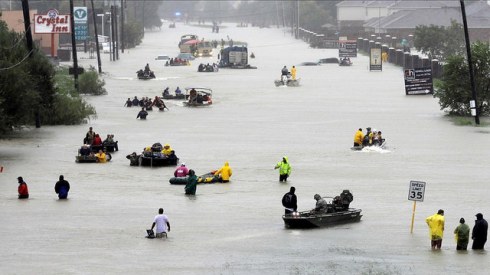By Maggie Nelsen, PISA Program Assistant, Sep. 22nd
As Americans across the country unify in support of the many people affected by Hurricanes Harvey and Irma, fewer people are discussing the bigger problems at play in the background of these disasters: governance management, social inequality, and climate change. This hurricane season is being reported as unprecedented in both the scale of the storms and their ensuing impact. Harvey and Irma have successfully garnered national attention and alarm over increasing severity and frequency of climatological events in the future. And more recently, the devastating impact of Hurricane Maria in Puerto Rico. But despite these events, public concern typically dissipates back into oblivion after storms pass. How can the country translate its non-partisan, but fleeting compassion over these disasters to long-term concern and willingness to undertake systemic issues much greater than the storms themselves? The severity of this hurricane season can serve as an opportunity to broaden public consciousness over the global phenomena of disasters with escalating magnitude and impact. Harvey, Irma, and Maria are reminders of a shared climate challenge by all, which becomes more critical every year.
Inconsistencies in media coverage of Harvey and Irma are worth discussing. Harvey and Irma’s destruction in the American South pales in comparison to its impact just beyond our borders in eleven Caribbean island countries and territories. Barbuda took a direct hit from Irma, likely the worst hit nation with 1,400 people homeless and 95% of the island decimated. While reports of hurricane destruction in the Caribbean blanketed American media before the storms reached the US mainland, once Irma tore into Florida, media ceased its reporting on the continuous suffering across several Caribbean states. In researching for this blog piece, I could not find current statistics summarizing the hurricane’s impact in the Caribbean; updated assessments of the Caribbean impact remained dated from before Irma’s landfall in the US. I imagine the same media coverage scenario will occur for Hurricane Maria’s landfall in Puerto Rico. Now, initial reportage of the immediate devastation in Puerto Rica is strong, describing the island’s total blackout, intense flooding, and lack of public communication channels. But a week and half from now, Puerto Ricans will continue to suffer while the media and the public turn their attention on to the next current event. Differences in reporting on natural disaster events persist on the global scale as well.
The disparity between the U.S. and the Caribbean in capacity to respond and recover from hurricane destruction is also undiscussed in the media. While FEMA is fraught with its issues, and the U.S. government response leaves much to be desired, there exists a tremendous non-profit infrastructure to support and oftentimes supplant government relief in the US. Our smaller Caribbean neighbors, island countries, have nowhere to evacuate and lack the resources to provide adequate assistance in recovery efforts. Scale up this disparity on a global level, to the natural disaster impacts endured in Asia, and consider the even greater inequality in capacity. As Americans reflect on the damage and hardship felt by hundreds of people in Florida, Texas, and the often-forgotten Caribbean, we can likewise be reminded of the similar, but greater plights tens of thousands of people face across Asia.
Several sub-regions in Asia experience near total devastation almost annually because of catastrophic environmental events. Yet, media coverage over the new reality of climate-induced natural disasters is scarce. In this year alone, 41 million people in Asia were affected by environmental catastrophes. Major transboundary floods inundated huge areas of territory in India, Bangladesh, and China this summer, amounting to 1,200 deaths. Harvey took 70 lives in the US, and Irma left 12 people dead. Many Americans and even more Caribbean island inhabitants now face homelessness or insurmountable costs to repair their homes and businesses. The long-term Harvey-Irma recovery process, especially in the Caribbean, is not to be discounted. However, the magnitude of devastation and desolation in Asia is incomparable. The entire world is undergoing an unprecedented climate shift; but the acute degree to which Asians are experiencing subsequent environmental repercussions of this shift, warrants greater attention.
In this day and age, few other global events are capable of connecting the world in solidarity. The outpouring of donations, volunteers, and dispatch of social workers from far and wide is a powerful testament to our shared humanity. Recent events can help expand our awareness of the magnitude of human suffering due to environmental disaster just over the border and on the other side of the world. From Texans and Floridians, to those afflicted more recently in Mexico and Puerto Rico, all deserve the same attention and support. Despite the miles that separate us, we share profound common experiences. We can care about one and all, and do something about it too.


This article is very helpful and grateful. Thank you for sharing awesome article.